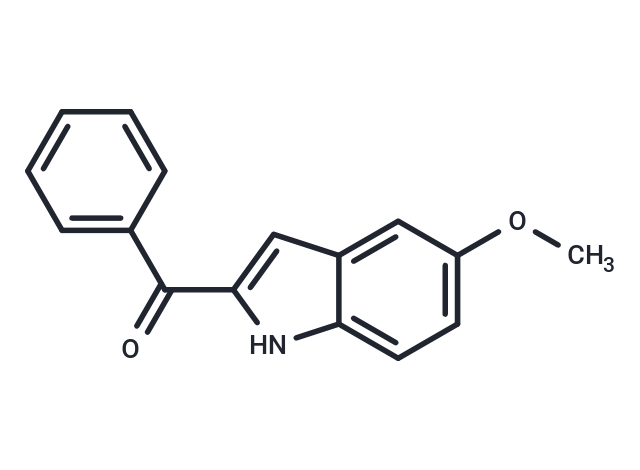Shopping Cart
- Remove All
 Your shopping cart is currently empty
Your shopping cart is currently empty

D-64131 is a tubulin polymerization inhibitor with an IC50 value of 0.53 μM.

| Pack Size | Price | Availability | Quantity |
|---|---|---|---|
| 5 mg | $29 | In Stock | |
| 10 mg | $43 | In Stock | |
| 25 mg | $95 | In Stock | |
| 50 mg | $173 | In Stock | |
| 100 mg | $270 | In Stock | |
| 200 mg | $398 | In Stock | |
| 1 mL x 10 mM (in DMSO) | $48 | In Stock |
| Description | D-64131 is a tubulin polymerization inhibitor with an IC50 value of 0.53 μM. |
| Targets&IC50 | Tubulin polymerization:0.53 μM. |
| In vitro | D-64131 dose-dependently inhibited the polymerization of bovine brain microtubulin and the binding of [3H]colchicine to biotinylated αβ-microtubulin. After treatment with D-64131, many Y cells displayed abnormal microtubule structures, such as divided mitotic spindles or multiple spindle poles. Nuclear vesicles and abnormal nuclear structures typical of apoptotic cells were detected in many cells treated with D-64131. |
| In vivo | D-64131 dose-dependently inhibited the polymerization of bovine brain microtubulin and the binding of [3H]colchicine to biotinylated αβ-microtubulin. After treatment with D-64131, many Y cells displayed abnormal microtubule structures, such as divided mitotic spindles or multiple spindle poles. Nuclear vesicles and abnormal nuclear structures typical of apoptotic cells were detected in many cells treated with D-64131. |
| Molecular Weight | 251.28 |
| Formula | C16H13NO2 |
| Cas No. | 74588-78-6 |
| Smiles | COc1ccc2[nH]c(cc2c1)C(=O)c1ccccc1 |
| Relative Density. | 1.231 g/cm3 (Predicted) |
| Storage | Powder: -20°C for 3 years | In solvent: -80°C for 1 year | Shipping with blue ice. | ||||||||||||||||||||||||||||||
| Solubility Information | DMSO: 25.1 mg/mL (99.89 mM), Sonication is recommended. | ||||||||||||||||||||||||||||||
Solution Preparation Table | |||||||||||||||||||||||||||||||
DMSO
| |||||||||||||||||||||||||||||||

Copyright © 2015-2025 TargetMol Chemicals Inc. All Rights Reserved.